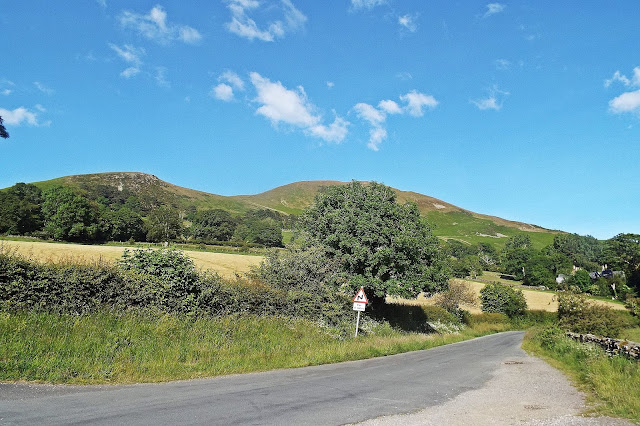Driving down the A5086 on my way to Egremont the previous day I'd noticed a sign for Loweswater pointing down a 'B' road on the left so that's the way I went and it wasn't long before the lake came into view. There was a long roadside lay-by not far from the top end of the lake but it was full of cars so I decided to check out the inn first; I'd gone quite a distance past the bottom end of the lake before I came to a single storey building with a parking area behind it where notices said 'Competitors and spectators only'.
It turned out that this was the village hall and I'd arrived in the middle of a '5 in 5' race where runners had to tackle five fells in five hours with the hall being the start and finish of the race. Not being sure of where else I could park, and with the road past the hall being fairly narrow, I decided to leave the van there, so to justify being there I went round to the front of the building and spent some time watching some of the runners as they arrived back from the race before I went in search of the inn, which turned out to be just a few minutes walk further down the road.
The Kirkstile Inn dates back to the 17th century and is a typical Lakeland coaching inn, a sprawling building with whitewashed walls and black window mouldings and set in a pleasant garden above the River Cocker. It doesn't seem to have much history attached to it and I suspect it's only featured in the book because it's well known for its own real ale and good food.
Across the lane from the inn was St. Bartholomew's Church which I discovered was open to visitors. The original small plain Lakeland chapel was built in 1827 and consecrated in 1829, then some years later a lead mine was opened in the vicinity and the village's population was expected to expand greatly. In 1884 the chapel was extensively enlarged and improved with very little of the earlier building remaining, but unfortunately the mine failed and the population stayed static. The church is a very simple place with plain windows, the only nod to any stained glass being the red border round each one, but it's a pleasant little place to spend a while.
Back up the hill I collected the van from behind the village hall and drove back up to the lay-by beyond the top end of the lake and luckily there was plenty of space to park by then. A gate at the end of the lay-by took me to a footpath across a couple of fields to a lane which led to a farm, then another footpath took me down towards the lakeside where the views began to appear, getting better as I walked along.
Eventually the path left the lakeside and took me through a forested area known as Holme Wood before emerging back onto flat open land by the lake with the fells in the distance and where a dinghy was moored by a little shingle beach - or maybe it was partially sunk as it was almost completely full of water. A gravel track led across the open land, eventually taking me to a narrow lane which in turn led back to the 'B' road where I could see the village hall a short distance down on the right.
I'd actually emerged onto the road some distance from the bottom end of the lake so I had quite a long walk back to the van; mostly it was along the road above the lake but there was one point where I found a faint path through the trees and managed to scramble down to the lakeside to get a couple more shots. The road seemed to go on for ever and I began to think I would never get back to the van but eventually I rounded a bend and could see the beginning of the lay-by up ahead, and there was the van waiting patiently in the sunshine for me.























